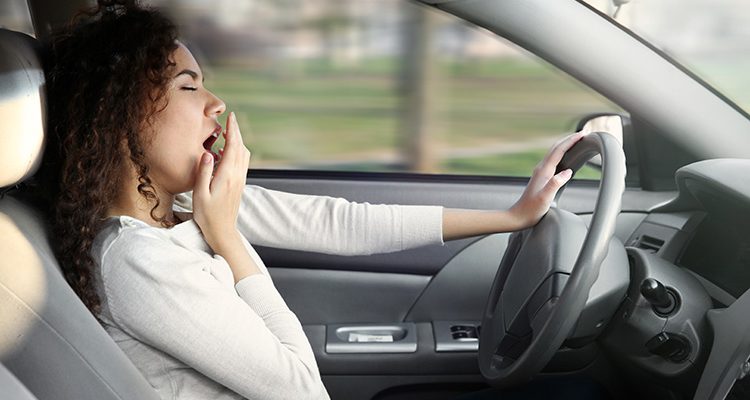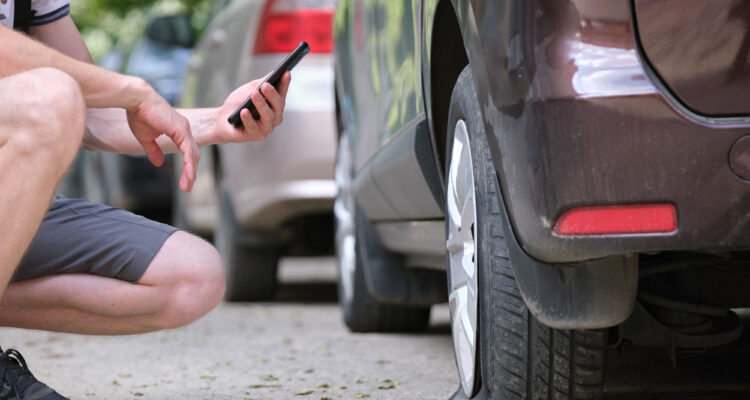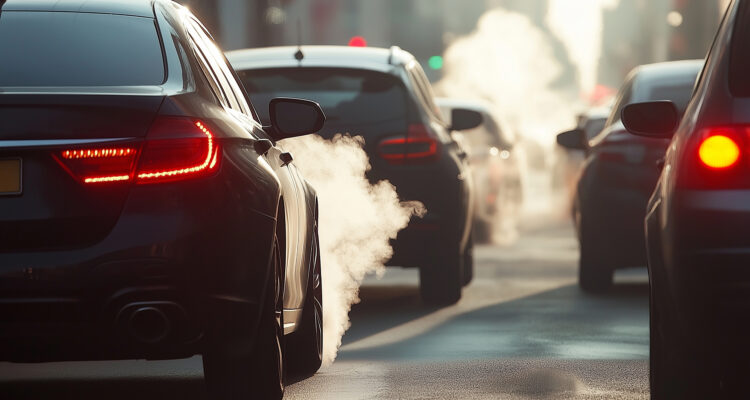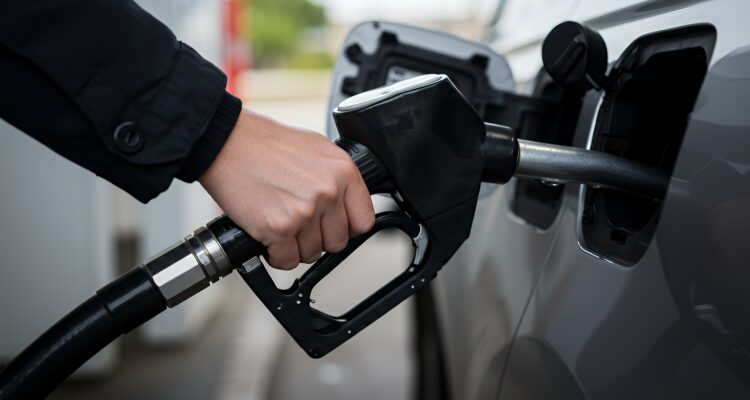We all know about the risks of drink-driving. We frown upon it and know that it slows our reaction time, increasing our risk of accidents. But, few of us would give drowsy-driving the same attention. And yet it can be as dangerous, if not more so, than drink-driving.
Drowsy-driving is driving when tired or sleepy. Given that we are getting fewer hours sleep than we used to, the perils of drowsy-driving are getting more and more important to know.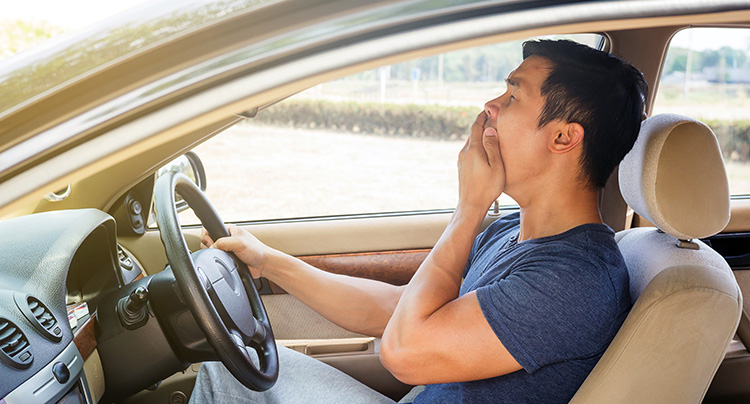
How does lack of sleep affect our driving?
Driving when tired impairs our driving performance from slower reaction times, reduced attention and poor control of our vehicle. Studies have shown that a person who drives after being awake for 19 hours (perhaps just driving home in the early hours of the morning after a sober night out) has driving skills similar to a driver who’s above the legal limit of alcohol. And a driver who has gone without sleep for 24 hours may as well be driving drunk. Lack of sleep and alcohol on board is a particularly deadly combination – in fat, you don’t just add the risks together – you multiply them.
What are the risks?
Your risk of a crash is 3 times greater if you have had less than 5 hours of sleep compared to a normal 7-8 hours. But if you have 4 hours or less of shut-eye, you dramatically increase your risk to over 11 times that of someone who is well-rested.
Falling asleep at the wheel is a pretty dramatic event and one that, hopefully, you have never experienced. Instead, you may think that you manage to stay awake, even when you are tired. But studies show that when we are sleep-deprived we have ‘micro-sleeps’ that we are unaware of. We don’t just lose concentration – we are literally asleep for a split second. It may seem trivial, but that split second of sleep can be enough to send us veering into the path of an on-coming lorry.
Can we reduce the risk?
Yes, get enough sleep in the first place! The easiest way to reduce your risk from drowsy-driving is to avoid being drowsy in the first place! Work hard on getting your 7-8 hours a night. If you need tips on improving your sleep then look at this article. Link to sleep tips article
Treat any conditions that may be affecting your sleep. Obesity can impair your sleep, especially if you think you may also have sleep apnoea – a condition where you snore badly at night and often fall asleep during the day. Drivers with sleep apnoea are at a significantly greater risk of involvement in motor vehicle accidents, potentially two to three times higher than other drivers. If you suspect sleep apnoea (which is often, but not always, associated with being overweight) then see your doctor and get it treated. Losing weight, if you need to, will help as well. I think we have a sleep apnoea article we can link to?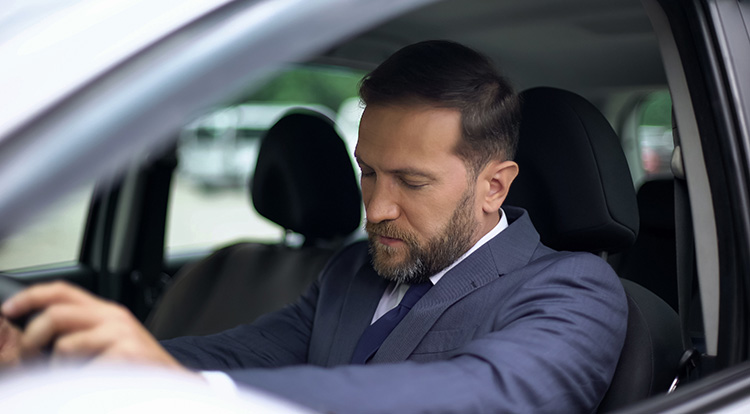
Don’t drive when drowsy. It’s not always possible to get a full night’s sleep. But, knowing the risks, do you really need to drive if you are exhausted? Treat drowsy-driving in the same way as you would drink-driving and just avoid doing it. Get a friend to take the wheel, get a taxi or take public transport.
Be aware of danger periods. Research shows that there are two daily peaks when accidents due to fatigue are most common….which seem to coincide with times when our natural body clock has us feeling most tired. The first is no surprise – it’s the wee small hours of the morning, commonly 2-6am. Not only is it dark and our body feels we should be tucked up in bed, but it may be the time when some of us are getting up for an early work shift or, conversely, heading home after a very late night. The second peak we could probably identify too if we thought about it….it’s that afternoon energy slump between 2.00pm and 4.00pm that often follows a large, carb-laden lunch. Keep to a lighter lunch to help reduce that particular risk. Particularly if you are tired anyway, think hard about whether you really need to drive during these danger periods.
What about caffeine? Caffeine is a double-edged sword. Caffeine after lunch can affect our sleep patterns, making drowsy-driving a problem the next day. But some studies have shown that it can help drivers to stay more alert and have faster reaction times. The same holds true of energy drinks containing caffeine and other stimulants – but these effects are quite small and caffeine, and energy drinks in general, should not be relied on.
Get out and about…or take a nap. Have you even started to nod off at the wheel only to be jolted awake by a rumble strip? A study found that the alerting effects of a rumble strip only lasted for up to five minutes before sleepiness returned so don’t rely on them to keep you going. This degree of tiredness in the car should be taken very seriously. If you can pull off somewhere safe and take a quick nap, then do. Otherwise a walk around in the fresh air may give you a little more time to get to your destination safely.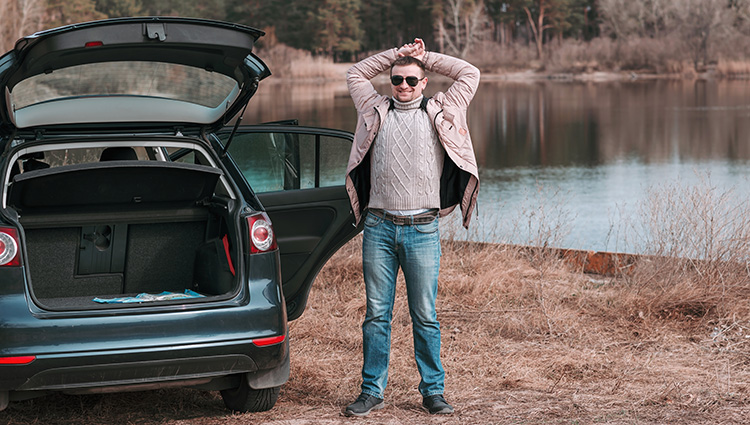
It’s hard to measure how many fatal accidents occur as a result of drowsy-driving because the police can’t check for that at the roadside, yet. But, don’t let your drowsiness be the cause of injury to you, a loved one or a total stranger. Treat it like drink-driving and steer well clear!
